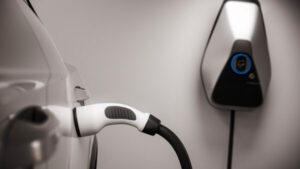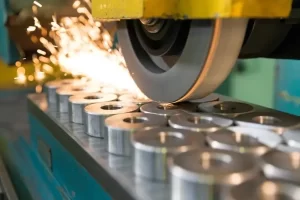How Metal Finishing Maximizes Performance of Automotive Tools
Metal Finishing
In the automotive repair industry, where precision and durability intersect, the quality and resilience of tools are non-negotiable. Advanced metal finishing techniques such as plating, anodizing, and coating transcend mere aesthetics, fundamentally enhancing the durability and functionality of these essential instruments. This in-depth exploration details how finishing methods ensure that automotive tools can endure the rigorous demands of maintenance and repair, extending their lifespan and maximizing their performance.
By improving resistance to corrosion, reducing wear, and increasing hardness, metal finishing processes not only extend the tools’ operational life but also optimize their performance, ensuring that automotive industry professionals can rely on their tools to deliver precision and durability consistently.
The Crucial Role of Metal Finishing in Automotive Tools
Automotive tools must endure extreme conditions: high torque, intense force, and the corrosive effects of automotive fluids. Automotive metal finishing is a crucial enhancement that boosts a tool’s resistance to wear and corrosion. Techniques like electroplating, anodizing, powder coating, and thermal spraying do more than just improve a tool’s look — they significantly enhance its performance and durability.
1. Electroplating: Ensuring Robust Durability and Corrosion Resistance
Electroplating is a cornerstone in the automotive tool industry. This method involves depositing a thin layer of metal — such as chromium, nickel, or zinc — onto the surface of a tool. This layer serves multiple functions: it enhances the tool’s aesthetic appeal, increases hardness, and, most importantly, boosts its resistance to rust and wear. Tools treated with electroplating, such as wrenches and screwdrivers, gain a surface that can withstand frequent exposure to corrosive agents and mechanical stress.
2. Anodizing: Specialized Protection for Aluminum Tools
Anodizing is tailored for aluminum tools, which are favored for their lightweight yet strong characteristics. This electrochemical process thickens the tool’s natural oxide layer, making it more durable and corrosion-resistant. Anodized tools are especially beneficial in environments that expose tools to moisture and chemicals, which are prevalent in automotive settings. The process shields the aluminum from oxidation and imbues it with vibrant colors for better visibility and identification.
3. Powder Coating: Achieving Superior Coverage and Durability
Powder coating is a superior finishing technique that applies a free-flowing, dry powder cured under heat to create a “skin.” This skin is much tougher than conventional paint and provides enhanced resistance to chipping, scratching, and other forms of wear. This makes powder coating ideal for heavy-duty automotive tools that frequently contact abrasive surfaces and materials.
4. Thermal Spraying: Tailored for High-Temperature Applications
Thermal spraying is used to apply a coating by heating a material—in wire or powder form—and spraying it onto the tool’s surface. This method is particularly beneficial for tools exposed to high temperatures, such as those used in engine repair and exhaust work. The coatings are typically made from metals, ceramics, or plastics, providing thermal barriers or restorative properties to worn-out tools, thereby extending their functional life.
5. Laser Engraving and Etching: Precision and Customization
Laser engraving and etching are modern techniques often used with metal finishing to add permanent markings to tools. These markings can include barcodes, tool numbers, or logos, which help in branding and tracking tool inventory in large automotive workshops. The precision of laser techniques ensures that these markings are clear and permanent and do not compromise the integrity of the metal.
Benefits of Metal Finishing for Automotive Tools
Metal finishing offers a suite of benefits that are critical for maintaining the effectiveness and longevity of automotive tools. Here are some of the key advantages:
- Extended Lifespan: Properly finished tools last significantly longer and robustly withstand the aggressive wear typical of automotive work environments.
- Optimized Performance: Enhanced surface properties mean tools can handle more demanding tasks and greater forces, translating into more efficient and reliable work.
- Cost Efficiency: The initial investment in metal finishing is quickly offset by the reduced need for frequent replacements, yielding substantial savings over time.
- Improved Resistance: Finished tools perform better against environmental threats like moisture, chemicals, and ultraviolet light, ensuring sustained operational performance.
Choosing the Appropriate Metal Finishing Technique
Selecting the right metal finishing technique for automotive tools involves careful consideration of several key factors. First, the tool’s material composition dictates the best finishing process. For example, steel tools may benefit most from electroplating or thermal spraying to prevent rust, while aluminum tools often require anodizing to strengthen their natural oxide layer and protect against corrosion.
The environmental conditions in which the tool will be used also play a crucial role in determining the suitable finishing technique. Tools exposed to high moisture or corrosive substances need durable finishes like nickel plating or powder coating, which provide superior durability in tough environments. Specific performance enhancements such as increased hardness, reduced friction, or improved thermal resistance must be considered. Techniques like thermal spraying are ideal for tools used in high-temperature areas as they enhance heat resistance.
Lastly, consulting with metal finishing experts is critical. Their deep understanding of how different metals and finishes behave under various conditions means they can offer customized advice, ensuring each tool is treated with the most effective technique to meet its specific needs.
Enhancing the Durability and Efficiency of Your Automotive Tools
The automotive industry demands tools that are capable, resilient, and superior in their performance. Metal finishing is an integral aspect of tool manufacturing that ensures each tool can withstand the demands of heavy use and adverse conditions. By investing in sophisticated metal finishing techniques, manufacturers and mechanics ensure that their tools are adequate and exceptional.
This forward-thinking approach in tool production underscores a commitment to quality, efficiency, and innovation, ensuring that tools are ready to perform excellently. By embracing advanced metal finishing techniques, the automotive repair industry can ensure that every bolt turned is a step toward maintenance perfection.






